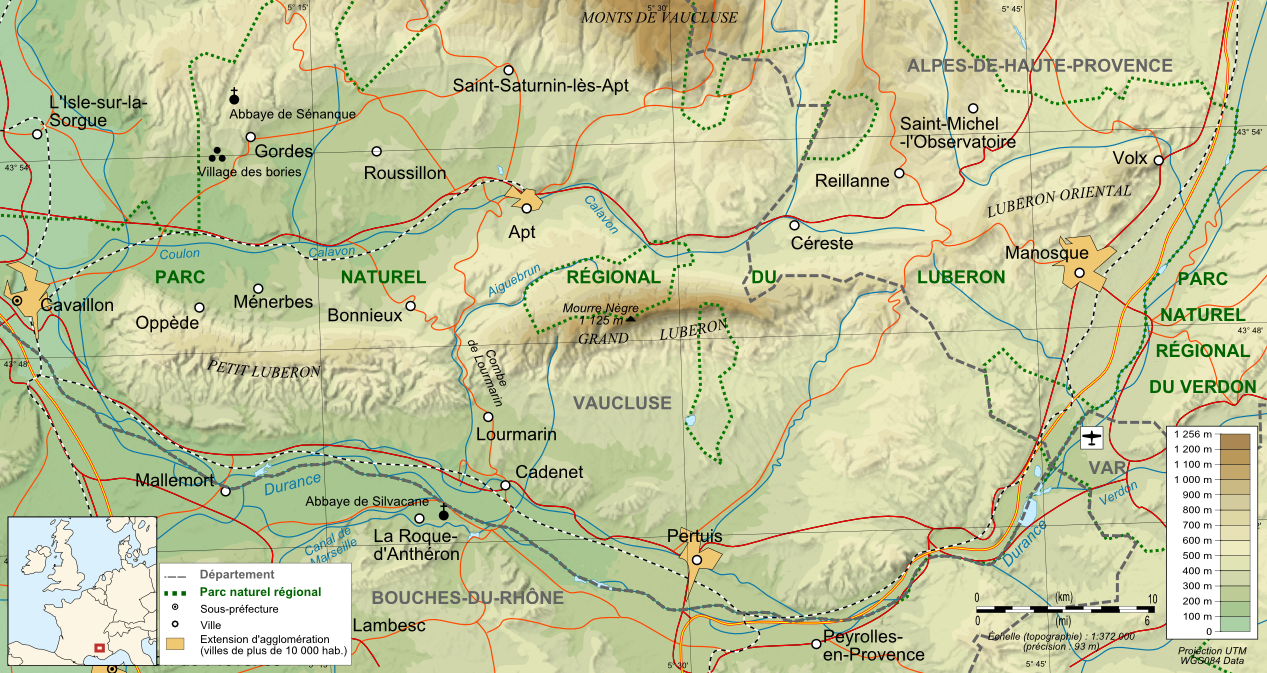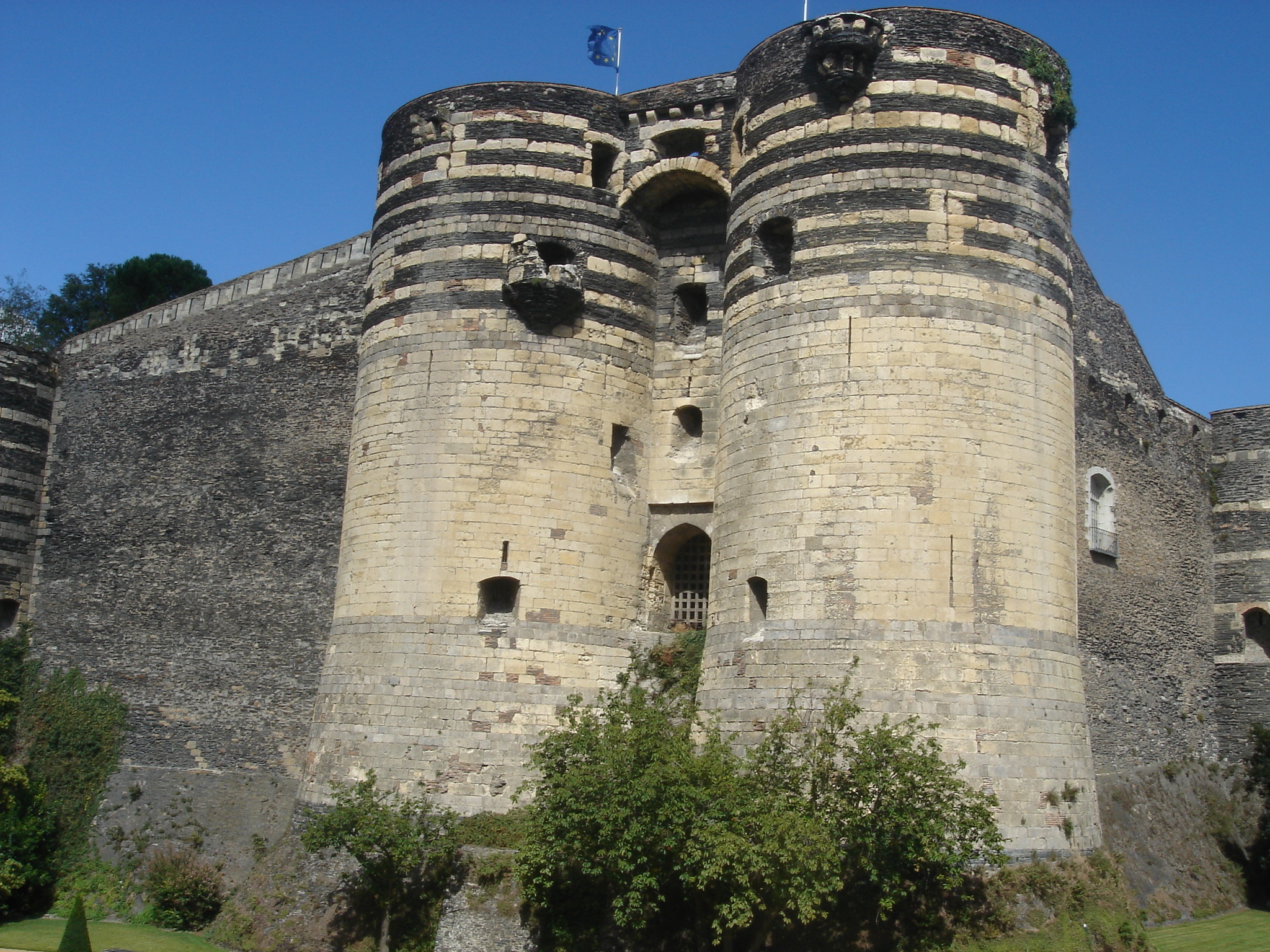|
Goult
Goult (; Occitan: ''Gòud'') is a commune in the Vaucluse department in the Provence-Alpes-Côte d'Azur region in Southeastern France. In 2021, it had a population of 1,080. The village is perched on a hill with a solitary road to the peak. Near the end of the road is a 12th-century castle, the Château de Goult. History Prehistory and Antiquity Arrowheads, polished axes, and grooved mallets found around Coulet Rouge attest to the presence of Neolithic people in the area of the current commune. During this period, significant agricultural development took place along the banks of the Calavon River. Specialists have linked these settlements to the Lagozza culture after the discovery of a large fragment of an anthropomorphic stele depicting a face with two noses and three eyes, likely representing a deity. On the left bank of the Calavon, the second dolmen in the department was discovered. Known as the Dolmen de l’Ubac, it was excavated between 1995 and 2001. Judging by th ... [...More Info...] [...Related Items...] OR: [Wikipedia] [Google] [Baidu] |
Luberon
The Luberon ( or ; Provençal dialect, Provençal: ''Leberon'' or ''Leberoun'' ) is a massif in central Provence in Southern France, part of the French Prealps. It has a maximum elevation of and an area of about . It is composed of three mountain ranges (from west to east): Lesser Luberon (''Petit Luberon''), Greater Luberon (''Grand Luberon'') and Eastern Luberon (''Luberon oriental''). The valleys north and south of them contain a number of towns and villages as well as agricultural land; the northern part is marked by the Calavon, while the southern part is characterised by the Durance. The Luberon is often advertised under the name Lubéron (with an acute accent on top of the "e"); some dictionaries justify that the two spellings are interchangeable. The total number of inhabitants varies greatly between winter and summer, due to a massive influx of tourists during the warm season. It is a favourite destination for French high society and British and American visitors becaus ... [...More Info...] [...Related Items...] OR: [Wikipedia] [Google] [Baidu] |
Calavon
The Calavon (; also called ''le Coulon'') is an long river in the Alpes-de-Haute-Provence and Vaucluse '' départements'', southeastern France. Its drainage basin is .Bassin versant : Calavon-Coulon (Le) Observatoire Régional Eau et Milieux Aquatiques en PACA Its source is near Banon. It flows generally west-southwest. It is a of the Durance into which it flows at [...More Info...] [...Related Items...] OR: [Wikipedia] [Google] [Baidu] |
Communes Of France
A () is a level of administrative divisions of France, administrative division in the France, French Republic. French are analogous to civil townships and incorporated municipality, municipalities in Canada and the United States; ' in Germany; ' in Italy; ' in Spain; or civil parishes in the United Kingdom. are based on historical geographic communities or villages and are vested with significant powers to manage the populations and land of the geographic area covered. The are the fourth-level administrative divisions of France. vary widely in size and area, from large sprawling cities with millions of inhabitants like Paris, to small hamlet (place), hamlets with only a handful of inhabitants. typically are based on pre-existing villages and facilitate local governance. All have names, but not all named geographic areas or groups of people residing together are ( or ), the difference residing in the lack of administrative powers. Except for the Municipal arrondissem ... [...More Info...] [...Related Items...] OR: [Wikipedia] [Google] [Baidu] |
René Of Anjou
René of Anjou (; ; 16 January 1409 – 10 July 1480) was Duke of Anjou and Count of Provence from 1434 to 1480, who also reigned as King of Naples from 1435 to 1442 (then Aragonese conquest of Naples, deposed). Having spent his last years in Aix-en-Provence, he is known in France as the Good King René (; ). René was a member of the House of Valois-Anjou, a cadet branch of the French royal house, and the great-grandson of John II of France. He was a prince of the blood, and for most of his adult life also the brother-in-law of the reigning king Charles VII of France. Other than the aforementioned titles, he was also Duke of Bar from the 1420s onwards and Duke of Lorraine from 1431 to 1453. Biography René was born on 16 January 1409 in the castle of Angers. He was the second son of Duke of Anjou, Duke Louis II of Anjou, Louis II of Duchy of Anjou, Anjou, King of Naples, by Yolande of Aragon, Yolanda of Kingdom of Aragon, Aragon. René was the brother of Marie of Anjou, w ... [...More Info...] [...Related Items...] OR: [Wikipedia] [Google] [Baidu] |
Anglo-Saxons
The Anglo-Saxons, in some contexts simply called Saxons or the English, were a Cultural identity, cultural group who spoke Old English and inhabited much of what is now England and south-eastern Scotland in the Early Middle Ages. They traced their origins to Germanic peoples, Germanic settlers who became one of the most important cultural groups in Britain by the 5th century. The Anglo-Saxon period in Britain is considered to have started by about 450 and ended in 1066, with the Norman conquest of England, Norman Conquest. Although the details of Anglo-Saxon settlement of Britain, their early settlement and History of Anglo-Saxon England, political development are not clear, by the 8th century an Anglo-Saxon cultural identity which was generally called had developed out of the interaction of these settlers with the existing Romano-British culture. By 1066, most of the people of what is now England spoke Old English, and were considered English. Viking and Norman invasions chang ... [...More Info...] [...Related Items...] OR: [Wikipedia] [Google] [Baidu] |
Paris
Paris () is the Capital city, capital and List of communes in France with over 20,000 inhabitants, largest city of France. With an estimated population of 2,048,472 residents in January 2025 in an area of more than , Paris is the List of cities in the European Union by population within city limits, fourth-most populous city in the European Union and the List of cities proper by population density, 30th most densely populated city in the world in 2022. Since the 17th century, Paris has been one of the world's major centres of finance, diplomacy, commerce, culture, Fashion capital, fashion, and gastronomy. Because of its leading role in the French art, arts and Science and technology in France, sciences and its early adoption of extensive street lighting, Paris became known as the City of Light in the 19th century. The City of Paris is the centre of the Île-de-France region, or Paris Region, with an official estimated population of 12,271,794 inhabitants in January 2023, or ... [...More Info...] [...Related Items...] OR: [Wikipedia] [Google] [Baidu] |
Marseille
Marseille (; ; see #Name, below) is a city in southern France, the Prefectures in France, prefecture of the Departments of France, department of Bouches-du-Rhône and of the Provence-Alpes-Côte d'Azur Regions of France, region. Situated in the Provence region, it is located on the coast of the Mediterranean Sea, near the mouth of the Rhône river. Marseille is the List of communes in France with over 20,000 inhabitants, second-most populous city proper in France, after Paris, with 873,076 inhabitants in 2021. Marseille with its suburbs and exurbs create the Aix-Marseille-Provence Metropolis, with a population of 1,911,311 at the 2021 census. Founded by Greek settlers from Phocaea, Marseille is the oldest city in France, as well as one of Europe's List of oldest continuously inhabited cities, oldest continuously inhabited settlements. It was known to the ancient Greeks as ''Massalia'' and to ancient Romans, Romans as ''Massilia''. Marseille has been a trading port since ancient ... [...More Info...] [...Related Items...] OR: [Wikipedia] [Google] [Baidu] |
Cavaillon
Cavaillon (; ) is a commune in the Vaucluse department in the Provence-Alpes-Côte d'Azur region of Southeastern France. INSEE It is situated in the Durance Valley, at the foot of the mountains. History Cavaillon was already a city in the Gallo-Roman period, and has several minor relics from that era, including a 1st century triumphal arch. Other minor relics of the Roman period have been found to the south of the town, on the site of the ancient ''Cabellio''. It was the seat of the bishops of Cavaillon from the 4th century[...More Info...] [...Related Items...] OR: [Wikipedia] [Google] [Baidu] |
L'Isle-sur-la-Sorgue
L'Isle-sur-la-Sorgue (; or ) is a town and Communes of France, commune on the Sorgue river in Southeastern France. Politically, the commune is in the arrondissement of Avignon within the Departments of France, department of Vaucluse, in the Regions of France, région of Provence-Alpes-Côte d'Azur. The small town is famous for its many antique shops and hosts antique markets most Sundays. It has many waterside cafés and restaurants, all within walking distance of each other. Its many attractive water wheels throughout the town are still in working order. L'Isle-sur-la-Sorgue had a population of 20,042 as of 2019. It is twinned with the towns of Penicuik in Scotland and Anagni in Italy. History Originally known as "Insula", the town officially adopted the name of "L'Isle-sur-la-Sorgue" on 18 August 1890, taking the latter part of its name from the river Sorgue, to which it owed much. As early as the 12th century, the river served defensively as a moat around ramparts which ... [...More Info...] [...Related Items...] OR: [Wikipedia] [Google] [Baidu] |
Beaumes-de-Venise
Beaumes-de-Venise (; ) is a commune in the Vaucluse department in the Provence-Alpes-Côte d'Azur region in southeastern France. Name The word "beaumes" comes from the Provençal word ''bauma'' meaning "cave" or "grotto". The surrounding hills have many of these caves that were inhabited during the Iron Age. Population Wine The village gives its name to a sweet wine appellation, Muscat de Beaumes-de-Venise. It also gives its name to a drier red wine, formerly Côtes du Rhone Villages Beaumes-de-Venise, now Beaumes de Venise AOC. See also * Dentelles de Montmirail *Communes of the Vaucluse department The following is a list of the 151 communes of the Vaucluse department of France. The communes cooperate in the following intercommunalities (as of 2025): [...More Info...] [...Related Items...] OR: [Wikipedia] [Google] [Baidu] |
Bédarrides
Bédarrides (; Provençal: ''Bedarrida'') is a commune in the Vaucluse department in the Provence-Alpes-Côte d'Azur region in southeastern France. Name The settlement is attested as ''villa Betorrida'' in 814, ''Biturrita'' in 898, ''Bisturrita'' in 903, ''Beddurida'' in 908, and ''Bederrida'' in 1274. Population See also *Communes of the Vaucluse department The following is a list of the 151 communes of the Vaucluse department of France. The communes cooperate in the following intercommunalities (as of 2025):Communes of Vaucluse {{Vaucluse-geo-stub ... [...More Info...] [...Related Items...] OR: [Wikipedia] [Google] [Baidu] |
Valréas
Valréas (; ) is a commune in the Vaucluse department in the Provence-Alpes-Côte d'Azur region in southeastern France. History The area around the town of Valréas is known as ''L'Enclave des Papes''. It is an enclave of Vaucluse, surrounded by the department of the Drôme. The foundation of the Enclave began in 1317 when Pope John XXII bought Valreas for the papacy of Avignon. The story goes that following a visit to Valreas, feeling unwell he was offered some wine from the area. Liking it he decided to purchase the town to ensure his wine supply. Over the next 150 years or so his successors added to the Enclave by the addition of the small towns of Visan, Richerenches and Grillon. The boundaries were defined by tall stone markers carrying the coat of arms of the popes. The present-day boundaries are still delimited by some of these stones, one of which is outside the entrance to the Valreas Tourist office. When the departments of France were created after the Revolutio ... [...More Info...] [...Related Items...] OR: [Wikipedia] [Google] [Baidu] |





